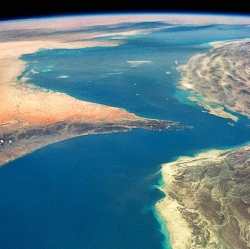
A joint study by NASA and the French space agency, Centre National d’Etudes Spatiales (CNES), has used space-based lasers to produce the first global study of the great migration of tiny marine animals that takes place twice every day. Using the Cloud-Aerosol Lidar and Infrared Pathfinder Satellite Observations (CALIPSO) satellite that was launched in 2006, the unprecedented 10-year study may provide new insights into the Earth’s climate.
When we think of animal migrations we usually think of herds of wildebeests roaming across the African veldt or flocks of geese seeking warmer climes as winter approaches, but these only occur a couple of times of the year and are small potatoes to what happens in the vast oceans.
Twice a day, when the sun rises and then when it sets, there is a tremendous movement of animal life in the sea.
Called the Diel Vertical Migration (DVM), it is the largest known migration in terms of both numbers and biomass. Huge schools of many different species, including krill, baby squid, larval crabs, and tiny fish take part in the DVM, but we don’t notice it as a rule because these animals are tiny – mostly microscopic.
Put simply, at night, these animals, called collectively zooplankton, rise to near the surface to feed on the tiny plants, called phytoplankton. When the day returns, these zooplankton dive back into the depths to hide in the dark waters from predators.
This gigantic movement has great importance in a wide number of areas, so NASA and CNES used the CALIPSO Light Detection and Ranging (LIDAR) laser from 2008 to 2017 to penetrate the top 20 m (66 ft) of the ocean to detect and study these tiny animals on a global scale.
“What the lidar from space allowed us to do is sample these migrating animals on a global scale every 16 days for 10 years,” says Mike Behrenfeld, the lead for the study and a senior research scientist and professor at Oregon State University in Corvallis, Oregon. “We’ve never had anywhere near that kind of global coverage to allow us to look at the behavior, distribution, and abundance of these animals.”
